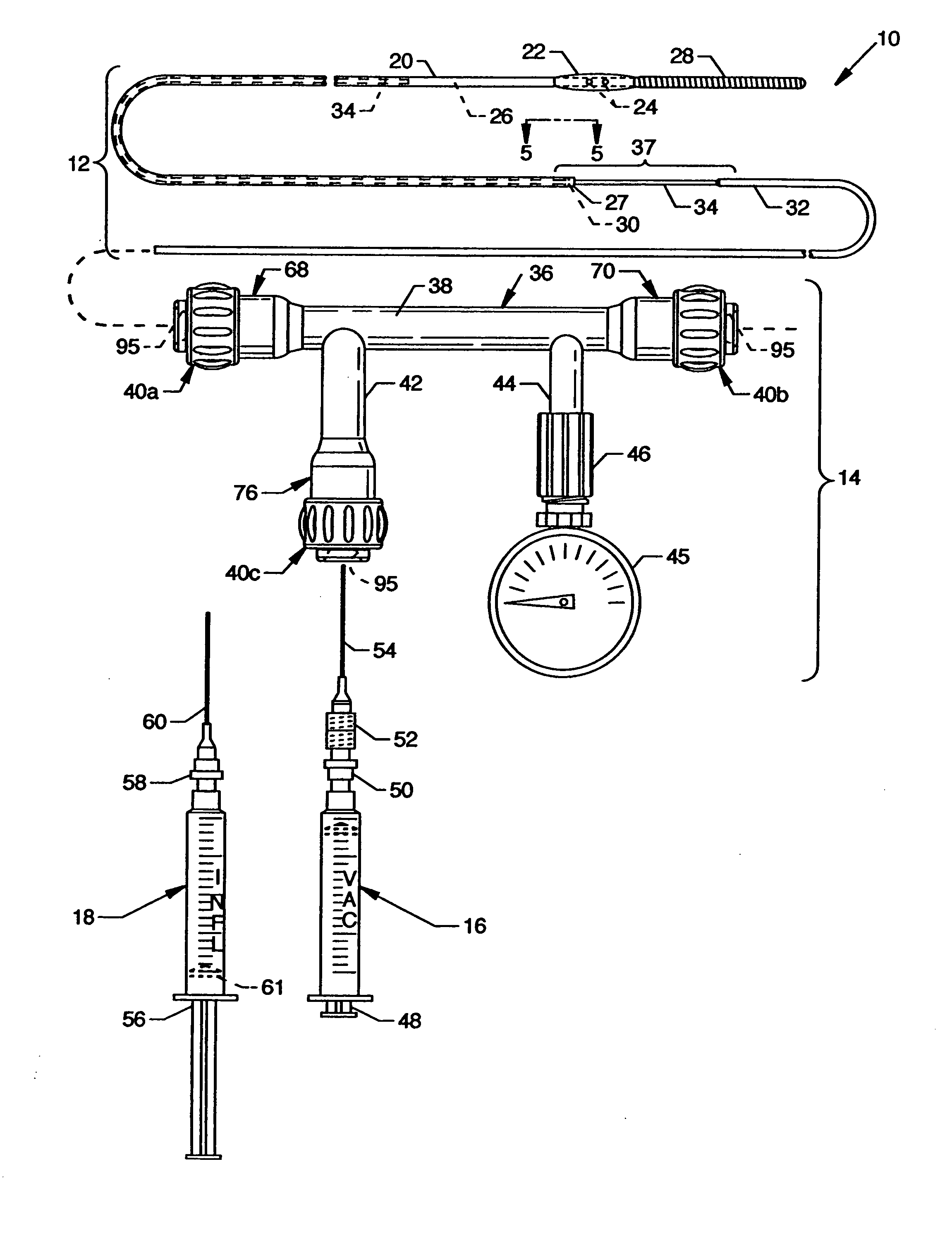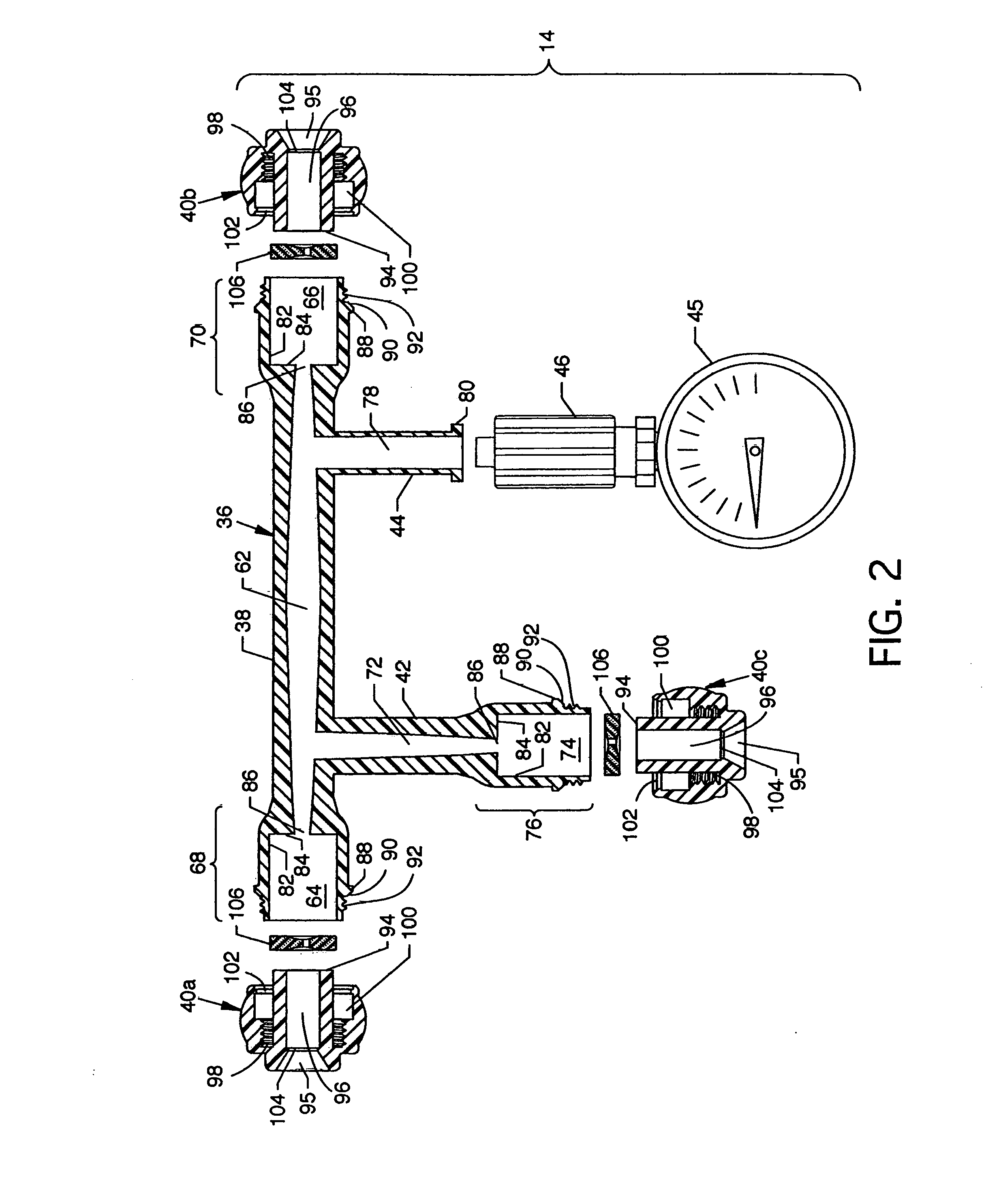Gas inflation/evacuation system incorporating a multiple element valved guidewire assembly having an occlusive device
- Summary
- Abstract
- Description
- Claims
- Application Information
AI Technical Summary
Benefits of technology
Problems solved by technology
Method used
Image
Examples
Embodiment Construction
[0058] Referring to FIG. 1, the overall outwardly visible structure of the gas inflation / evacuation system incorporating a multiple element valved guidewire assembly having an occlusive device 10, one embodiment of the present invention, is now described. The gas inflation / evacuation system incorporating a multiple element valved guidewire assembly having an occlusive device 10 comprises a multiple element valved guidewire assembly 12, a manifold assembly 14, an evacuation syringe 16 and an inflation syringe 18.
[0059] The multiple element valved guidewire assembly 12 preferably includes, amongst other components described herein, a flexible guidewire tube 20 of braided polyimide, an occlusive device being an occlusive balloon 22 located at the distal end of guidewire tube 20, a plurality of inflation orifices 24 extending through the wall of the guidewire tube 20 in communication between a lumen 26 (FIGS. 5, 6 and 8) of the guidewire tube 20 and the occlusive balloon 22, a flexible...
PUM
 Login to View More
Login to View More Abstract
Description
Claims
Application Information
 Login to View More
Login to View More - R&D
- Intellectual Property
- Life Sciences
- Materials
- Tech Scout
- Unparalleled Data Quality
- Higher Quality Content
- 60% Fewer Hallucinations
Browse by: Latest US Patents, China's latest patents, Technical Efficacy Thesaurus, Application Domain, Technology Topic, Popular Technical Reports.
© 2025 PatSnap. All rights reserved.Legal|Privacy policy|Modern Slavery Act Transparency Statement|Sitemap|About US| Contact US: help@patsnap.com



